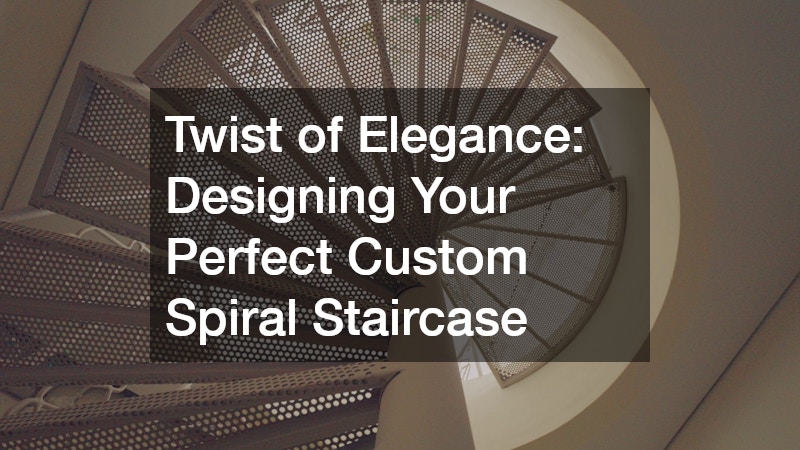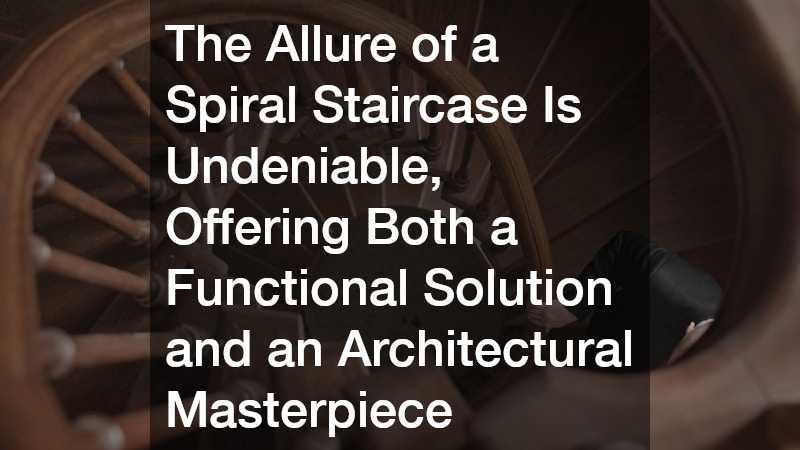

The allure of a spiral staircase is undeniable, offering both a functional solution and an architectural masterpiece that can transform any space. Embarking on the journey of designing a custom spiral staircase requires understanding a blend of design elements, material choices, and installation considerations. This article aims to guide you through the essential aspects of achieving the perfect spiral staircase for your home or office.
What Are the Design Options Available for a Custom Spiral Staircase?
Designing a custom spiral staircase opens up a world of creativity and style. Whether you are inclined towards a traditional design that exudes old-world charm or a sleek, contemporary look that complements modern interiors, understanding the design spectrum is essential. Classic spiral staircases typically involve ornate ironwork and wooden treads, combining elegance with durability. On the other hand, a minimalist design might employ glass treads and stainless-steel balustrades, creating an airy and modern aesthetic fit for avant-garde spaces.
The core structure of a spiral staircase is defined by its central pole, which serves as the spine of the design. This central element can be composed of materials such as metal for a more industrial vibe, or wood for warmth and tradition. Its diameter and height play crucial roles in determining the final appearance and space utilization of the spiral staircase. Furthermore, the radius of the spiral and the number of treads are pivotal in shaping the gradient and footprint of the staircase, balancing both aesthetic appeal and functional access.
Balustrades, the safety and decorative element, offer another avenue for innovation. Wrought iron balustrades can add intricate beauty with their detailed craftsmanship, while glass or acrylic balustrades provide unobstructed views and a sense of openness. The choice of balustrades should meld with the overall design theme, achieving a harmonic balance between safety and style. With a repertoire of materials, finishes, and design influences, each component of the spiral staircase can be tailored for a perfect fit in any architectural narrative.
How Do I Select the Right Materials for My Spiral Staircase?
Material selection for a spiral staircase is integral to its longevity, aesthetic, and functionality. Wood offers warmth and tradition, suitable for both rustic and contemporary settings. When selecting wood, types like oak and mahogany are known for their durability and rich textures, while finishes can range from stained to painted, depending on the desired look. For a more modern or industrial feel, metals such as steel and aluminum provide strength and can be powder-coated in various colors to match your interior palette.
In environments where natural light or the illusion of space is crucial, materials like glass can be employed for treads or balusters. Tempered glass is a popular choice because it provides clarity and safety while allowing light to filter through, augmenting the sense of space. Glass elements can be paired with steel or wood to create a striking contrast or a seamless blend, tailored to the staircase’s surrounding environment.
Environmental conditions must also be considered when choosing materials. Metal staircases, for instance, are ideal for outdoor settings or areas with high humidity due to their resistance to weather and corrosion. Similarly, treat wooden components with appropriate sealants to safeguard against moisture and wear. By thoughtfully considering the material characteristics, homeowners can create a visually appealing spiral staircase without compromising safety or durability.
What Should I Consider During the Installation Process?
The installation of a custom spiral staircase is a precise and intricate process. Foremost, space constraints need to be evaluated meticulously to ensure the staircase fits seamlessly into the intended area. Accurate measurements of the floor-to-floor height, the diameter of the spiral, and surrounding clearances are essential for flawless installation. In small spaces, opting for a compact design may help in maximizing both utility and aesthetic without overwhelming the area.
Complying with local building codes and safety regulations is non-negotiable when installing a staircase. This includes the correct railing height, tread width, and depth, as well as the overall stability of the structure. Engaging with professionals who understand these requirements is crucial to ensure the staircase is safe and compliant. An experienced installer will also foresee and address any potential challenges, such as uneven flooring or unusual architectural features, that could impact the installation process.
Lastly, working with skilled craftsmen and reputable suppliers can significantly affect the outcome of your project. Professional insights can guide the selection of quality materials and craftsmanship, ensuring that each component of the staircase is installed to perfection. A professional installation not only enhances the visual appeal of the staircase but also guarantees its structural integrity, providing peace of mind regarding safety and durability over the long term.
Designing a custom spiral staircase involves careful consideration of design preferences, material choices, and installation challenges. By addressing these key aspects, you can successfully create an elegant centerpiece that enhances your space while fulfilling its practical functions.



